I have a 2d histogram created with stat_bin2d in the ggplot2 package. I'd like to control both the number of breaks in the color gradient, as well as where those breaks are located. I'm sure I'm just overlooking something small, but I can't figure out how to control the breaks in the binning.
Example:
x <- rnorm(100)^2
y <- rnorm(100)^2
df <- data.frame(x,y)
require(ggplot2)
p <- ggplot(df, aes(x, y))
p <- p + stat_bin2d(bins = 20)
p + scale_colour_gradient2(breaks=c(1,2,3,4,5,6))
This produces:

This plot only has 3 breaks at c(5,10,15) despite my futile attempt to put breaks at c(1,2,3,4,5,6))
Any hints?

